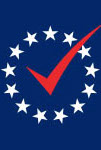Date Published: 2013-06-21
Author(s):
Daron Shaw, University of Texas at Austin
Vincent Hutchings, University of Michigan
Abstract:
Both empirical and anecdotal data indicate that the use of provisional ballots in U.S. elections is a mixed bag. On the one hand, providing voters whose eligibility is unclear with an opportunity to cast a provisional ballot might prevent many voters from being disenfranchised. Indeed, the evidence from several states (for example, in California provisional ballots were estimated to be 5.8% of all ballots cast in 2008) indicates that the incidence of disputed eligibility can be quite substantial, and that provisional balloting options are substantively important. On the other hand, those states with provisional balloting systems may be less likely to seek to improve their registration, voter list, and election administration procedures, as provisional ballots provide a “fail-safe” option.
We assume that the goal here is to (a) reduce incidences in which voter eligibility is at issue, and (b) provide an opportunity for all eligible voters to participate. In light of these goals, we recommend the best practices identified in the U.S. Election Assistance Commission’s 2010 report on provisional voting: improving voter outreach/communication, adding to staff and poll worker training, encouraging more consistent and comprehensive Election Day management procedures, and strengthening procedures for offering and counting provisional ballots as well as upgrading post-election statistical systems. These recommendations respect differences between and amongst the states, but provide a pathway for achieving consistency within states and improving voting procedures across the board.
We also recommend that provisional ballot procedures are consistent within a given state, that younger voters be targeted for outreach, that provisional voting data be integrated into the voter lists and analyzed to inform outreach, and that both Election Day and (especially) post-election procedures for using and counting provisional ballots be strictly defined, understood, and implemented by election administrators.
